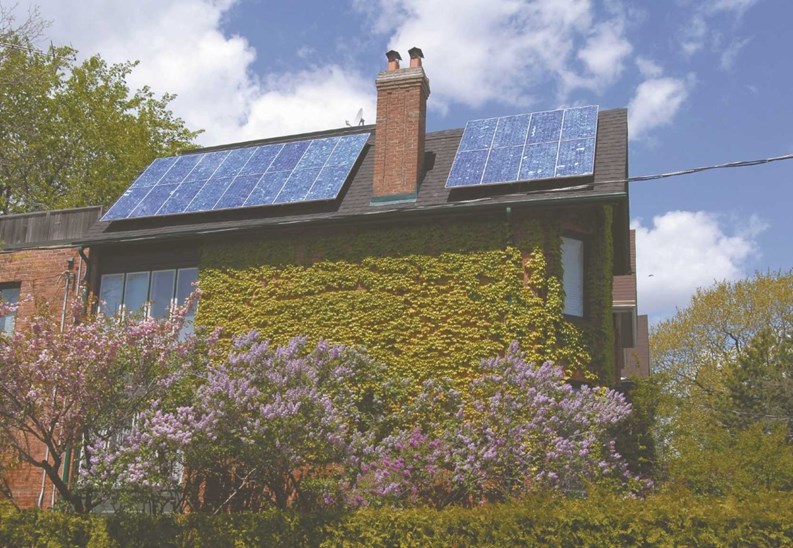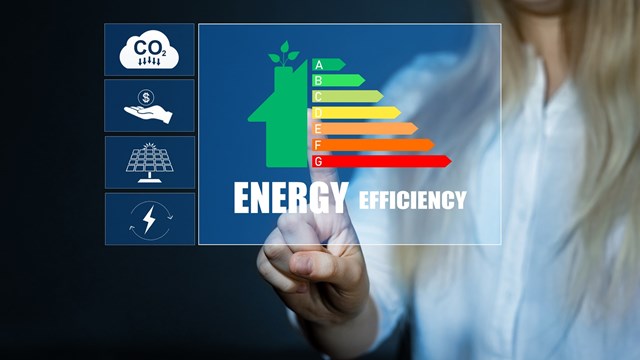A couple years ago, River Run Condominiums in Northampton, Massachusetts decided it was time for a change—they wanted to be green. It wasn’t a paint job they needed, but an environmental transformation—an investment that would help defray their monumental heating and cooling costs. After careful consideration and a consultation with an engineering firm, they decided to install an alternative thermal solar panel system that would ultimately reduce their water heating costs and become a better source of energy from the environment.
Curt M. Freedman, the president of CMF Engineering in Longmeadow, Massachusetts and the designer of the system implemented at River Run, explains that it includes 25 four-by-eight solar panels in each existing building.
“The goal was to use the solar energy to preheat domestic hot water,” says Freedman. “On an annual basis the system would supplement more than 50 percent of the water heating and energy needs at the facility. During the warmer weather it would provide almost 100 percent of its water heating needs.”
River Run is just one of many associations nationwide using (or looking into using) alternative sources of energy—including solar and wind—to reduce their energy bills and benefit the environment.
The American Solar Energy Society (ASES) explains that photovoltaic cells convert sunlight directly into electricity. PV cells are the solar cells that are often used to power calculators and watches, and are made of semi-conducting materials similar to those used in computer chips. When sunlight is absorbed by these materials, the solar energy knocks electrons loose from their atoms, allowing the electrons to flow through the material to produce electricity. This process of converting light (photons) to electricity (voltage) is called the photovoltaic effect.
Today, with gas prices rising to historic highs and more serious attention being paid to global warming, it seems that there is a larger and larger push towards green ideology and clean energy.
According to a recent press release from the New Jersey Board of Public Utilities (NJBPU), the Garden State’s solar renewable energy portfolio standard “requires that 20 percent of New Jersey’s energy come from Class One renewable sources by 2020, and includes a 2.21 percent solar set aside—the nation’s largest solar commitment relative to population and energy consumption.”
According to its website, the New Jersey Board of Public Utilities (NJBPU) is fighting the good fight against climate change and astronomical utility bills. The NJBPU vows to help “advance and promote the implementation of energy efficiency and renewable energy for both electric and natural gas to assist in achieving the governor’s energy reduction goal of 20 percent by 2020.” The program offers incentives to offset the initial costs of installing “renewable energy technologies” and has had and annual funding level of $186 million over the last four years.
NJBPU reports that there has been a tremendous increase of solar installations (in all types of buildings—not just residential) in New Jersey. The state has gone from just six major solar installations in 2001 to more than 3,000. Today, New Jersey has more than 3,257 solar installations statewide (consisting of residential, commercial, public, institutional and non-profit entities), generating nearly 57 megawatts of solar capacity, marking it as one of the fastest growing solar energy markets in the United States.
Plus, with various financial incentives and benefits—including rebates from the New Jersey Clean Energy Program, a federal tax credit and solar renewable energy certificates—the payback period for participants be less than 10 years.
“New Jersey’s statewide clean energy initiative helps New Jersey residents, businesses and communities reduce their energy use, lower costs and protect the environment,” says Doyal Siddell, public information officer for the NJBPU. “Our objective is to transform the energy marketplace in New Jersey and [move it] toward more energy-efficient and renewable-energy technologies.”
Converting to solar does cost money up front, and Siddell explains that the money that must be invested will vary from association to association. “It will vary primarily based on what an organizations goals and desired outcomes are,” he says, which makes it nearly impossible to quote even a general figure for the final cost of implementing a solar generation program in an HOA. But, with intentions of growing the industry in a cost competitive manner, similar to computers and ell phones, the NJBPU is looking towards a successful future with alternative energy.
And if it seemed as if New Jersey was sticking solely to its old guns of fossil fuel, according to the press release, “the revised 2008 solar budget is $191 million.”
Geothermal Energy
The word geothermal comes from the Greek word ‘geo,’ which means earth, and ‘therme,’ which means heat. So, naturally, geothermal energy is heat from within the earth. We can use the steam and hot water produced inside the earth to heat buildings or generate electricity. Geothermal energy is a renewable energy source because the water is replenished by rainfall and the heat is continuously produced inside the earth.
Ray Mayer of Able Environmental in Point Pleasant, New Jersey has been installing geothermal systems in residential and commercial buildings since 1969.
“The systems are expensive, but from day one you pocket about $300 per month in savings,” says Mayer, who uses the system in his own house and says he is now a ‘former’ asthmatic. “The traditional systems burn gas, so they introduces all types of pollutants into the atmosphere and into your home,” says Mayer. “With geothermal, you are transferring heat into and out of the house with an electric pump, but nothing kicks up your allergens. You’re always bringing in fresh air from the outside, heating, cooling, dehumidifying and killing mold, mildew [and] germs.”
Mayer explains that plenty of homeowners think nothing of buying a car for $40,000—so, he says, “why not invest that amount in your home? And if you’re worried about the price of the electricity [which runs the system], electricity has never gone up compared to the rate of fossil fuels.”
While some are enthused about the prospect of using underground heat to generate power, some industry pros think we’re a long way from harnessing the potential power of earth’s energy. “I think it’s a gimmick—a waste of money,” says Freedman, who goes on to say that a better solution would be to purchase high-efficiency air-cooled compressors for your air conditioning systems, in order to get a better performance.
“I’m finding the performance isn’t there [with geothermal power] and the system doesn’t adequately heat homes,” he says. “Because the price of electricity is so high and geothermal systems are dependent on electricity, if a new home is well insulated with modern windows, the heating and air-conditioning loads are going to be small, but the geothermal costs will be high.”
While the debate continues, Freedman says a building’s best alternative source of energy is conservation. “Improve your envelope, shading of windows, exterior awnings, keep AC costs low and use high-efficiency equipment and boilers is your best approach,” he says. “Conservation has the best return on investment. Some conservation measures are even eligible for the Energy Policy Act of 2005 tax credits and reduction.”
Wind Power!
Wind power converts wind energy into more useful forms, usually electricity, using wind turbines and it’s one of the fastest growing forms of alternative energy in the United States. Statistics show that growing from almost nothing in 1980, wind-powered turbines generated 11,605 megawatts of electricity in the United States in 2006, still less than one percent of the national power supply though.
Wind tends to be the most expensive alternative energy because of the cost of installing windmills and other wind-catching infrastructure. However, the efficiencies of new technologies are constantly improving, making the final cost come down little by little, and currently there are 18 small wind projects, 11 of which are residential, are approved for installation in NJ.
If your building or association is ready to move forward with a serious energy conservation program, there are many options to consider, regardless of your financial limitations. The first step is to research your choices, examine your budget and pick an option that best fits your building’s needs. That first step is usually the hardest, but after that you can continue to turn your association to the green side while maintaining a robust bottom line and helping to preserve the environment, all at the same time.
Lisa Iannucci is a freelance writer and author living in Poughkeepsie, New York.







Leave a Comment